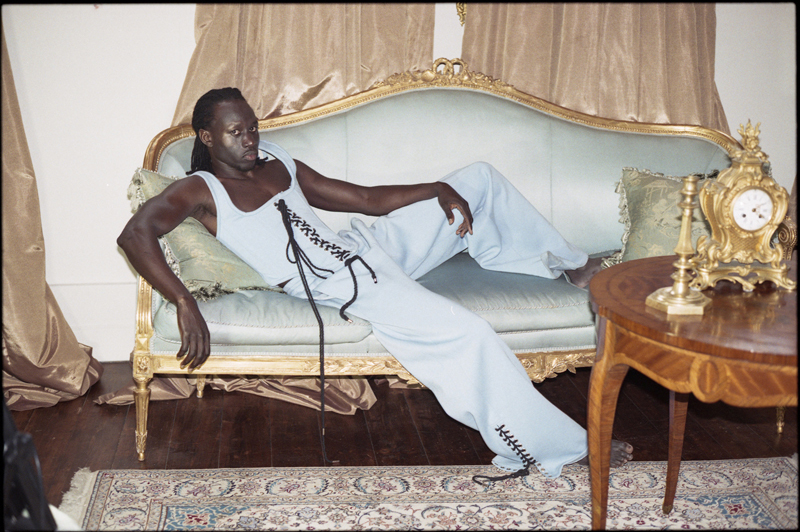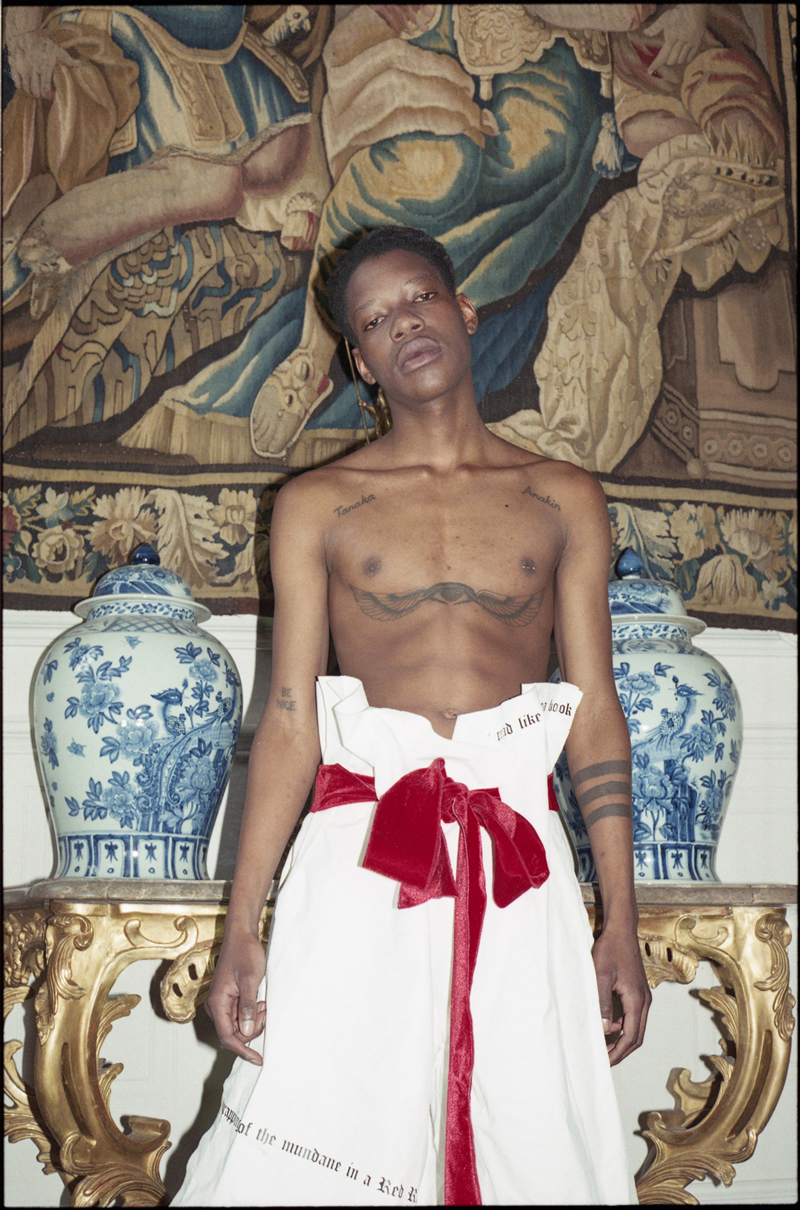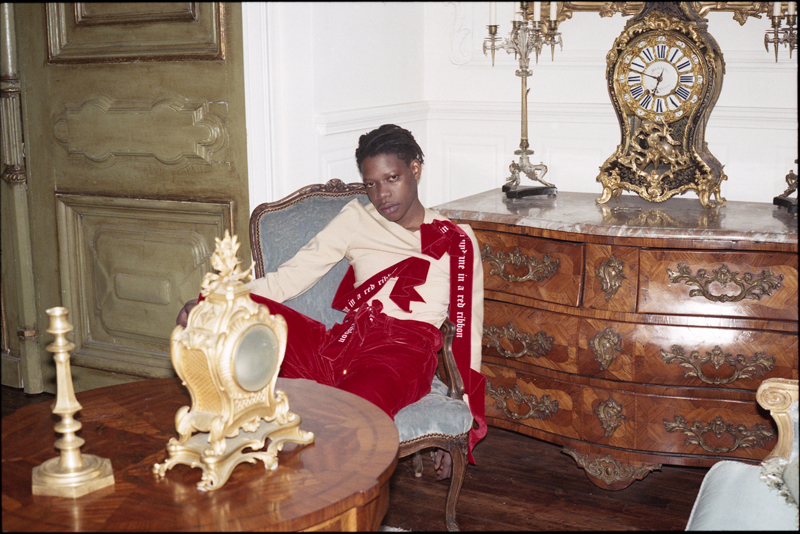RMIT menswear designer Jordan Conder’s clothes question the internal and external motivations that weigh on us when we get dressed each morning. He wants to challenge the modern doctrines of masculinity, and how they are reinforced through fashion. Staples and basics are rejected, as an alternative he offers Prince Charming and fairy tales – complete with corsets, statement sleeves and red velvet. To anyone who baulks at the thought of slipping off a bomber jacket, he asks them to examine why they don’t consider their extensive options. After all, why should fashion fancy be saved for the girls?
Student collections often look at the relationship between the female and garment, why did you choose to place this conversation within the male context?
For me it’s more interesting exploring the relationship between male and garment because I identify as a male. Rather than being speculative on what it’s like to dress as a woman, which I have in past work, it’s more comfortable to speak about the realm of menswear because I’ve grown up with the prescribed ideals of dressing up “the man”. These are ideas which are heavily involved in my work, I want to question pre-existing relationships which are tied to the male wardrobe.

Do you think the relationship men have with their wardrobe is different to women?
Definitely. There is a lot more liberation to be embraced within the female wardrobe. Whilst menswear has its flourishes, it’s often tied to age old perceptions that fashion is married to femininity, which frightens men. Men who say they don’t consider what they wear or don’t have any interest in fashion are lying: their involvement with fashion is positioned within the everyday procedure of getting dressed. What they choose to wear is considered. Even if it’s their old polo shirt and shorts, they still chose those garments to represent how they want others to perceive them.
The silhouettes of the clothes are very Prince Charming-esque, tell us about using baroque shapes like the corset and puffed sleeve to employ a fairy tale aesthetic.
I’m attempting to question the codes of contemporary dress in order to reveal the social semiotics of dressing by pairing them with historical “peacocking” techniques. I’ve attempted this by using modern dress hybridised with the historic dress that is prevalent in the dressing up of traditional fairy tale characters. By applying these redundant styles in the present, I’m looking to question the motives of dressing and position it as the building of a fictional character.


Credits
Text and art direction Jamie-Maree Shipton
Photography Agnieszka Chabros
Models Tig @ Folk Collective and Tito
Hair and make-up Kate Radford
